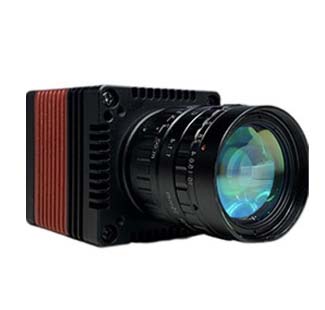SWIR Camera Module
(2024年04月25日)https://www.everaytech.com/products/swir-camera-module/
SWIR stands for short-wave infrared, which is a range of the infrared spectrum that spans wavelengths from approximately 0.9 to 1.7 micrometers. SWIR cameras are used in a variety of applications, including machine vision, semiconductor inspection, food inspection, solar panel inspection, and more.
An SWIR camera module is a compact, self-contained unit that contains all the necessary components for capturing SWIR images. This infrared camera module typically includes a SWIR sensor, optics, electronics, and software for processing and analyzing the images. SWIR camera modules are often used in applications where size, weight, and power consumption are critical, such as unmanned aerial vehicles (UAVs), handheld imagers, and portable surveillance systems.
What is the Difference Between NIR and SWIR?
The main differences between NIR and mid-infrared are the wavelength range and the other spectrum carrying information.
According to the wavelength, the infrared band can be divided into three different regions: the near-infrared region (0.75~2.5 μm), the mid-infrared region (2.5~25 μm), and the far-infrared region (25~1000 μm). Near-infrared is produced by the doubling and combining frequencies of molecules; mid-infrared belongs to the fundamental frequency vibration spectrum of molecules; far-infrared belongs to the rotation spectrum of molecules and the vibration spectrum of certain groups.
How do SWIR Modules Work?
Lens for SWIR In contrast to Mid-Wave Infrared (MWIR) and Long-Wave Infrared (LWIR) light, which are emitted by the object itself, SWIR light is similar to visible light in that photons are reflected or absorbed by an object, providing a strong contrast required for high-resolution imaging. Natural SWIR emitters such as ambient starlight and background radiance (nightglow) provide excellent illumination for nighttime outdoor imaging.
Using a lens that has been designed, optimized, and coated specifically for the SWIR wavelength range is essential. Images with a lower resolution and more optical aberrations will be produced by employing a visible spectrum-specific lens. Since SWIR wavelengths travel through optical components like windows, lenses, and glass, designed for SWIR can be made using the same methods as visible parts, which makes it possible to use protective windows and filters in a system and lowers the cost of making them.
SWIR can be used for a lot of applications that are hard or impossible to do with visible light. Water vapor, fog, and some materials, like silicon, are transparent when imaged using SWIR. Additionally, using SWIR, colors that appear nearly identical in the visible can be distinguished easily.
Electronic board inspection, solar cell inspection, produce inspection, identifying and sorting, surveillance, counterfeit detection, and process quality control are just a few of the many uses for SWIR imaging.
What is SWIR Camera Module Used for?
In various areas of industry and research, SWIR cameras are utilized for inspection, quality control, identification, detection, surveillance, and other purposes. Here we sum up certain applications where the SWIR range is ordinarily utilized. Every day, new applications are discovered.
By imaging beyond the visible spectrum, short-wave infrared cameras enable a variety of new applications or enhance existing machine vision systems. For instance, enabling users to see through surfaces that are not transparent to the human eye enables them to comprehend underlying characteristics like fill levels, concealed moisture, or tamper-resistant security codes.
For more info about high resolution thermal imaging camera, contact us.
- «前のできごと |
- 次のできごと»
- このできごとのURL:






コメント